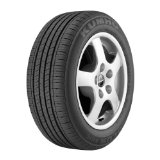 High Performance
Tires or Cheap
Tires? High Performance
Tires or Cheap
Tires?
Stay safe and save money with high performance tires as tire failure causes about 400 fatalities and about
10,000 injuries every year. (Traffic Safety Administration)
7 tips for buying tires:
-
Stick with the same size and rating as
the factory-equipped tires. They offer the same braking handling, traction, durability and load
requirements your vehicle was designed to provide.
-
Tire replacement should be done in full
sets to maintain the handling traction and balance.
-
The latest technology in tread design and construction with higher performance tires provide optimum tread
life,smooth ride, traction, fuel economy and safety.
-
Cheap tires or specifically, lesser
grade economy tires have less tread life and fuel economy and lack the benefits of a longer lasting high
grade tire. In the long run cheap tires will
cost you more.
-
Buying tires that are well suited for your climate and
terrain is important. A mud and snow tire is best for harsh climates and for good
traction. All terrain tires have a
thicker tread for off road traction but are difficult to
handle at higher speeds.
-
High performance tires do well for dry pavement
traction and handling but not so well in snow.
-
All season tires are not as good in the snow but are designed for average seasons all year. Think about the conditions you
drive in because there are pros and cons with each type of tire. Visit a tire replacement center
and have all your tires including the spare inspected, you may prolong your tires by having them rotated.
What are all the numbers on my
Tires?
P185/60R14 82H-
P185 is the width of tire in
millimeters
/60
Ratio of height to width
R
Radial
14
diameter of wheel in inches
82H
load index and speed symbol
DOT MAL9ABC036-is the U.S. dept. of safety standard code
sidewall 2-plies - tire-ply composition and materials used
tread wear 220traction A temperature A- tread wear, traction and temperature
grades
max. load 1300lbs. max pres 35psi, radial tubeless - maximum cold inflation and
load limit
Tire Tips for Maintenance
When tires are under inflated it is the most vulnerable time for tire failure. Check your pressure every week when you fill up for gas and don't
forget the spare. The most accurate pressure readings are given by high quality digital or dial guages.
Stick with the factory recommended premium quality high performance tires or their equivalent. Look on the
car door label or owners manual for inflation specs. Know your tire
size.
When it's cold adjust pressure as recently driven tires
experience air expansion and display higher pressure readings.
Replace tires when you see obvious signs of damage like
sidewall cuts, bubbles, exposed cord or smooth areas between treads.
Get an inspection right away if you notice your
vehicle is handling or riding different.
Rotate tires every 6-8000 miles (see owners manual) move
the rear tires to the front and opposite sides (left rear to right front) to maximize uniform wear.
Request an inspection at rotation time as you may not
notice anything during a a basic pressure check.
Steel and polyester cord is prone to pull apart as tires
age causing separation of the
tread.
Tires over five years old should have a yearly close inspection,
including the spare.
Tires over 10 years old must be replaced as they are
considered no longer safe.

For more tire research check out this Tire Guide.
| 

 Facebook
Facebook Google Bookmarks
Google Bookmarks Digg
Digg Delicious
Delicious Stumbleupon
Stumbleupon Technorati
Technorati Twitter
Twitter